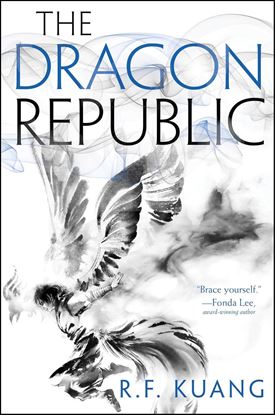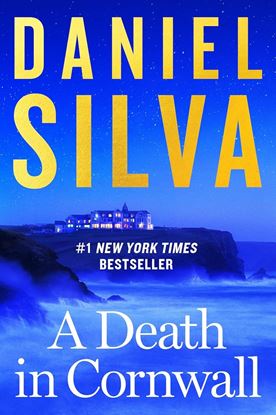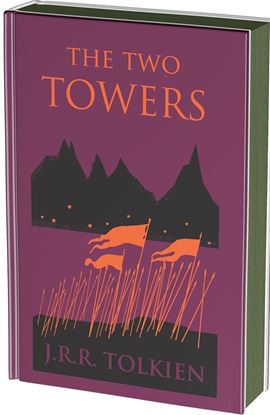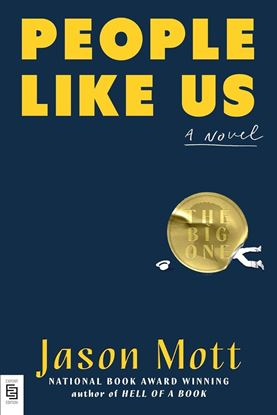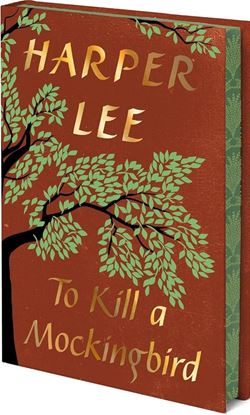

THE DRAGON REPUBLIC (2) (HC)
The war is over.
The war has just begun.
Three times throughout its history, Nikan has fought for its survival in the bloody Poppy Wars. Though the third battle has just ended, shaman and warrior Rin cannot forget the atrocity she committed to save her people. Now she is on the run from her guilt, the opium addiction that holds her like a vice, and the murderous commands of the fiery Phoenix—the vengeful god who has blessed Rin with her fearsome power.
Though she does not want to live, she refuses to die until she avenges the traitorous Empress who betrayed Rin’s homeland to its enemies. Her only hope is to join forces with the powerful Dragon Warlord, who plots to conquer Nikan, unseat the Empress, and create a new republic.
But neither the Empress nor the Dragon Warlord are what they seem. The more Rin witnesses, the more she fears her love for Nikan will force her to use the Phoenix’s deadly power once more.
Because there is nothing Rin won’t sacrifice to save her country . . . and exact her vengeance.
1,995
A DEATH IN CORNWALL
A brutal murder, a missing masterpiece, a mystery only Gabriel Allon can solve . . .
Art restorer and legendary spy Gabriel Allon has slipped quietly into London to attend a reception at the Courtauld Gallery celebrating the return of a stolen self-portrait by Vincent van Gogh. But when an old friend from the Devon and Cornwall Police seeks his help with a baffling murder investigation, he finds himself pursuing a powerful and dangerous new adversary.
The victim is Charlotte Blake, a celebrated professor of art history from Oxford who spends her weekends in the same seaside village where Gabriel once lived under an assumed identity. Her murder appears to be the work of a diabolical serial killer who has been terrorizing the Cornish countryside. But there are a number of telltale inconsistencies, including a missing mobile phone. And then there is the mysterious three-letter cypher she left behind on a notepad in her study.
1,300
THE BURNING GOD (3) (HC)
Frodo and the Companions of the Ring have been beset by danger during their quest to prevent the Ruling Ring from falling into the hands of the Dark Lord by destroying it in the Cracks of Doom.
Now they continue their journey alone down the great River Anduin—alone, that is, save for the mysterious creeping figure that follows wherever they go.
This elegant hardcover—now available for the first time in the United States—is one of five Collector’s Editions of Tolkien’s most beloved works, and an essential piece of any Tolkien reader’s library.
1,995
PEOPLE LIKE US
The riveting new novel by the author of the 2021 National Book Award winner and bestseller Hell of a Book
People Like Us is Jason Mott’s electric new novel. It is not memoir, yet it has deeply personal connections to Jason’s life. And while rooted in reality, it explodes with dreamlike experiences that pull a reader in and don’t let go, from the ability to time travel to sightings of sea monsters and peacocks, and feelings of love and memory so real they hurt.
In People Like Us, two Black writers are trying to find peace and belonging in a world that is riven with gun violence. One is on a global book tour after a big prize win; the other is set to give a speech at a school that has suffered a shooting. And as their two storylines merge, truths and antics abound in equal measure: characters drink booze out of an award trophy; menaces lurk in the shadows; tiny French cars putter around the countryside; handguns seem to hover in the air; and dreams endure against all odds.
1,350
TO KILL A MOCKINGBIRD COLLECTOR'S EDITIO
Shoot all the bluejays you want, if you can hit em, but remember it's a sin to kill a mockingbird
One of the most cherished stories of all time, To Kill a Mockingbird has earned many distinctions since its publication in 1960. It won the Pulitzer Prize, was named the best novel of the twentieth century by librarians across the nation, and was voted by readers as America’s “most beloved novel” on PBS’s The Great American Read. It remains a staple of many high school reading lists across the country and has been translated into more than forty languages, selling more than forty million copies worldwide. A gripping, heart-wrenching, and wholly remarkable tale of coming-of-age in a South poisoned by virulent prejudice, it views a world of great beauty and savage inequities through the eyes of a young girl, Scout Finch, and her brother, Jem, as their father, Atticus—a crusading local lawyer—risks everything to defend a Black man unjustly accused of a terrible crime.
1,995


